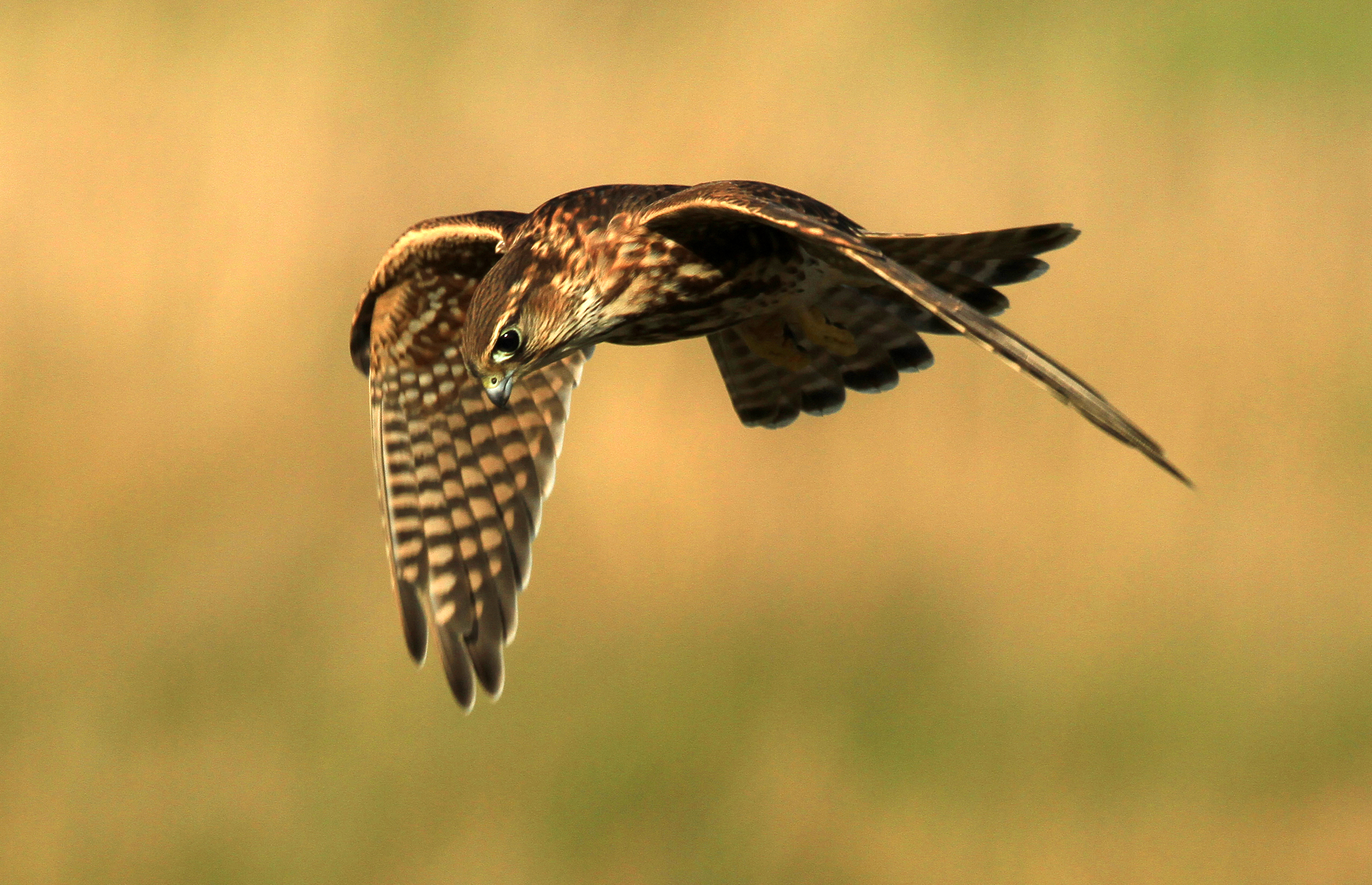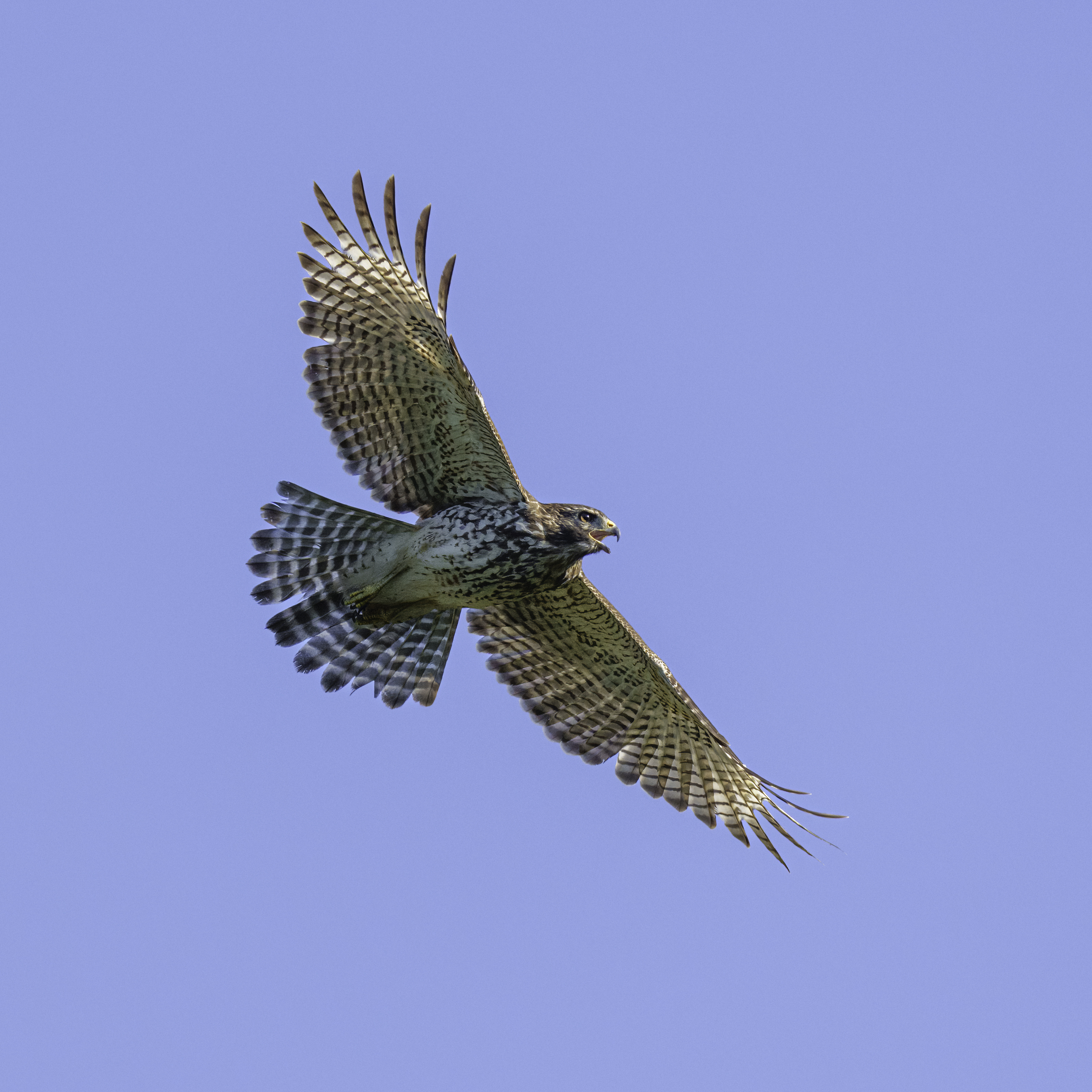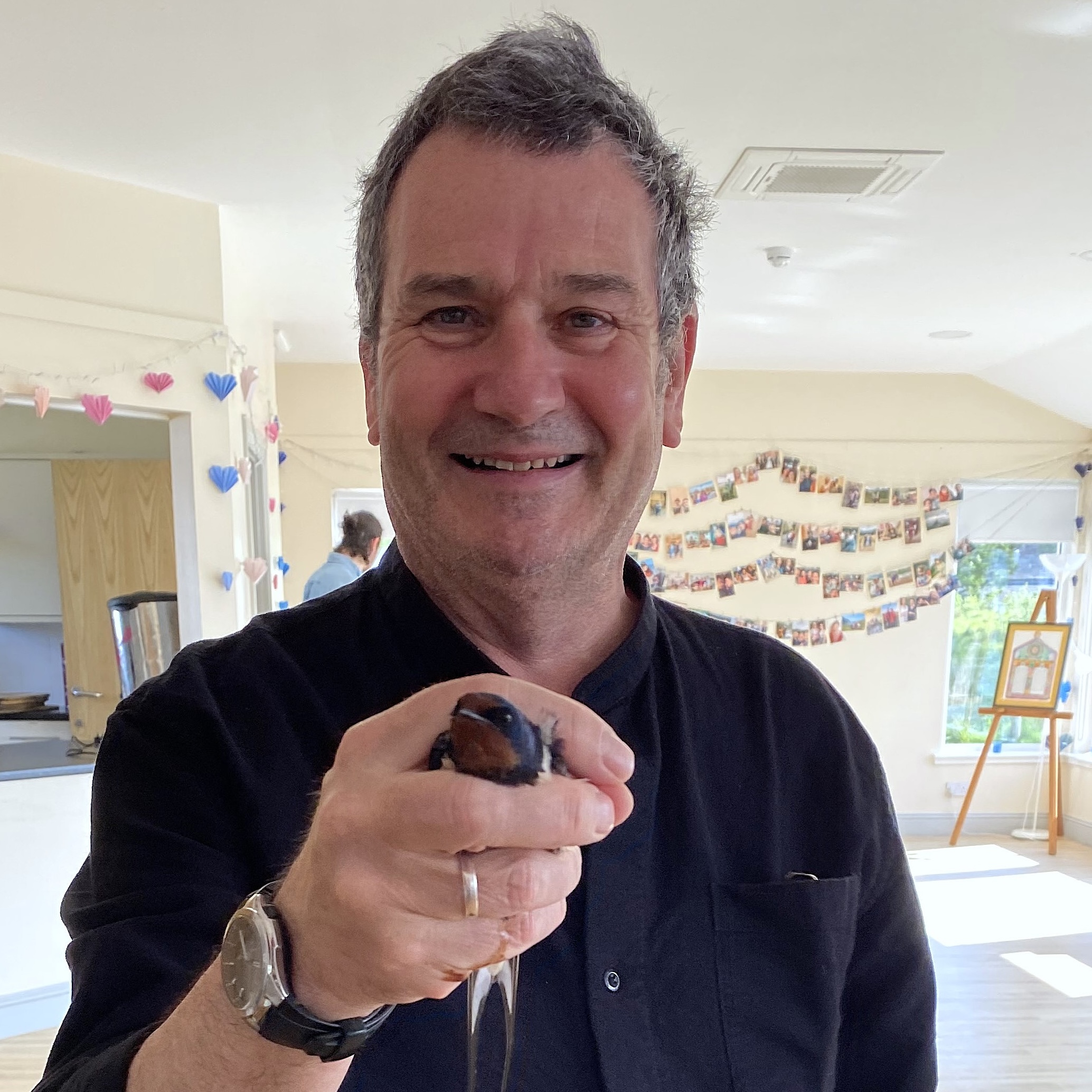Merlins: Britain's smallest bird of prey is a 'swerving, zigzagging, 240mph weighted missile' that's gutsy enough to chase off a golden eagle
Size doesn’t matter when it comes to the fighting spirit of the tiny merlin, a fierce parent and favoured hunting accessory of Mary, Queen of Scots.


When I suggested that the merlin (Falco columbarius) could be considered this country’s most dramatic avian predator, some readers might think me perverse. Especially when I add, in the next breath, that it is also the smallest of Britain’s birds of prey (although sparrowhawks can weigh less).
Some male merlins are barely bigger than mistle thrushes, but what size cannot measure is the sheer charisma of the bird in almost everything it does. An illustration of the courage shown by adult merlins in defence of their chicks is that they are known to attack and chase away the more conventional ‘stars’ among this bird family — peregrines, gyr falcons and even golden eagles.
Merlin wings, like the tail, are short and pointed. Even in leisured flight, they work with electric speed. In fact, part of the thrill of every merlin is establishing its identity before it vanishes, usually in seconds and often never to be seen again. The sound recordist Ludwig Koch once claimed to record one flying at almost 240mph.
His figure may be wildly exaggerated, but it reflects the startling pace merlins seem to achieve. As one stoops to strike, often hurtling no more than 3ft from the ground, with wings closed over the body so that it resembles a weighted missile, the bird acquires explosive power. No wonder that it gave its name to the most famous aircraft engine of the 20th century: the 27-litre V12 Rolls-Royce engine that powered the Spitfire was named not for the magician of Arthurian legend, but for this magnificent. pocket-sized bird.

One observer claims to have clocked a merlin at 240mph — and while that's likely a wildly inaccurate figure, the merlin's blend of speed and power still makes you half believe it.
Throughout their huge Eurasian and North American range, merlins have inspired many ornithologists, all of whom try to capture the same singular elan. ‘Bold, fearless and unsuspicious,’ wrote an American admirer, as a British proponent noted the bird’s ‘single-minded tenacity’. An Indian scholar recalled a bird ‘persistently twisting, swerving, zigzagging, rising and falling in tune with the desperate manoeuvres of its quarry’.
What adds lustre to encounters in Britain is the species’ scarcity. Except during winter, when British and northern European birds can be found on many coastal estuaries, it is a speciality of our uplands, roughly from central Wales and the Peak District as far as northern Scotland, where there are breeding strongholds on Orkney and Shetland. With only an estimated 1,150 nesting pairs, the majority of which are in Scotland, it is easily the rarest British falcon and now red listed, whereas across the whole of the northern European range it is classified as vulnerable.
Merlins may seize headlines for taking birds as large as themselves — thrushes, turnstones, redshanks, lapwings and partridges — but their main food is a smaller suite, including larks, finches and chats. The mainstay of both the adult diet and the species’ breeding regime, representing 50%–60% of food supplied to chicks in some studies, is the meadow pipit. That bird’s own slump to near-threatened status may be implicated in the comparable loss of the falcon itself.
Exquisite houses, the beauty of Nature, and how to get the most from your life, straight to your inbox.
It would be pleasant to imagine that the species’ name carries some buried association with Camelot’s magician-in-chief, but ‘merlin’ probably derives from a French word for an artillery piece called an esmerillon. It conveys something of the bird’s martial spirit, but it also reflects that, at one time, merlins were a sort of weapon themselves.
Medieval falconry was not only entertainment for the elite, it was also a source of wild-caught protein for the wider community. The strict hierarchy governing feudal society meant that different birds of prey were allocated according to one’s social status. The enormous white-plumaged gyr falcon might have been the bird of choice for royalty and peregrines suited to nobility, but the fierce spirit of the merlin was by no means despised. Indeed, the male’s beautiful combination of blue-grey upperparts and orangey breast would have made it a rather chic accessory on my lady’s elegant wrist — Mary, Queen of Scots was apparently much attached to hunting with her merlin.

Friend to royalty: Mary Queen of Scots favoured the merlin for her falconry.
A speciality was to set the bird after larks, which were themselves prized dainties at medieval banquets. This subspecies of falconry was directed to a particularly dramatic scenario, with the lark spiralling upwards in an attempt to out-climb its pursuer. Yet it is also a tableau we may observe involving wild skylarks and wild merlins — I recall seeing it once, when both birds towered into a vast sky over the Norfolk Broads, until they were mere pinpricks in the blue. It was one of the most memorable sightings of any raptor in my life.
Mark Cocker is a naturalist and multi-award-winning author of creative non-fiction. His latest book, ‘One Midsummer’s Day: Swifts and the Story of Life on Earth’, is out in paperback (Vintage, £10.99)
Mark Cocker is a naturalist and multi-award-winning author of creative non-fiction. His last book, ‘One Midsummer’s Day: Swifts and the Story of Life on Earth’, is out in paperback. A new book entitled 'The Nature of Seeing' will be published next year by Jonathan Cape.
